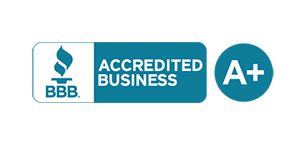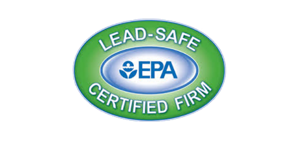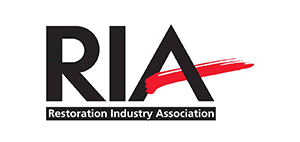As a homeowner, maintaining a properly functioning roof is a crucial aspect of keeping your property safe and protected. Unfortunately, many homeowners face common roof damage due to various factors, such as bad weather conditions, natural wear and tear, or improper installations. Recognizing the signs of roof damage is vital to taking prompt action and addressing any issues before they worsen.
In this section, we will discuss the most common types of roof damage that homeowners typically face. We will provide insights into how to recognize roof damage, the specific signs and symptoms of the most common culprits, and the best approaches to repair and prevent roof damage.
Key Takeaways:
- Common roof damage includes roof leaks, missing shingles, roof punctures, and roof sagging.
- Recognizing the signs and symptoms of roof damage is crucial for prompt action.
- Proper repair and preventative measures can help extend the lifespan of your roof and protect your home.
Identifying the Most Common Roof Damage
Recognizing the signs and symptoms of common roof damage is crucial for prompt repairs and preventing further issues. Two of the most common indicators of roof damage are leaks and missing shingles. Roof leaks typically manifest in the form of water stains or puddles on your ceiling or in your attic. Missing shingles, on the other hand, can expose the underlayment and leave your roof vulnerable to leaks and punctures.
Roof punctures may be caused by a variety of factors, such as hail or tree branches. They can lead to leaks, which may go unnoticed until the damage becomes severe. Roof sagging, which might be a result of structural issues or excessive weight on the roof, might also cause issues that lead to roof damage and leaks.
It is important to note that some of these symptoms may not be visible from the ground level. Regular roof inspections can help detect and address these issues before they escalate.
| Common Types of Roof Damage | Signs and Symptoms |
|---|---|
| Roof Leaks | Water stains or puddles on ceilings or in attics |
| Missing Shingles | Exposed underlayment and vulnerability to leaks and punctures |
| Roof Punctures | May be caused by hail, tree branches, or other factors; can result in leaks |
| Roof Sagging | May be a result of structural issues or excessive weight on the roof; can lead to roof damage and leaks |
By identifying these common types of roof damage and their symptoms, you can promptly address any issues and prevent further damage. In the next section, we will delve into the repair process for common roof damage and the options available.
Repairing Common Roof Damage
If you’ve identified common roof damage, it’s important to repair it as soon as possible to prevent further damage.
There are several options available for repairing your roof, including do-it-yourself (DIY) repairs and hiring professional roofing services.
If you’re considering DIY repairs, it’s important to keep safety in mind. Make sure you have the appropriate equipment and knowledge to perform the repairs safely and effectively. Additionally, keep in mind that DIY repairs may not be as durable or long-lasting as professional repairs.
Hiring professional roofing services can ensure that your roof is repaired correctly and efficiently. However, it’s important to do your research and choose a reputable and experienced company to ensure quality workmanship.
The cost of repairing common roof damage can vary depending on the extent of the damage and the type of repair needed. For minor repairs, DIY options may be more cost-effective. However, for severe damage or if you’re unsure about the extent of the damage, it’s best to consult with a professional roofing service.
In some cases, a roof replacement may be necessary instead of repair. Factors such as the age of the roof, the extent of the damage, and the cost of repairs compared to replacement should be considered before making a decision.
Preventing Common Roof Damage
Prevention is key when it comes to maintaining a healthy roof that will last for years to come. You can take the following proactive measures to avoid the most common types of roof damage:
- Regular Roof Maintenance: Schedule an annual inspection with a professional roofing contractor to assess the state of your roof, check for any damage or leaks, and perform necessary repairs. It’s also essential to keep your roof clean of debris, such as leaves, branches, and dirt, which can accumulate and cause damage over time.
- Gutter Cleaning: Clogged gutters can lead to water buildup on your roof, resulting in damage and leaks. Ensure that gutters are free of debris and functioning correctly, especially after a heavy storm or season.
- Tree Trimming: Overhanging branches can cause significant damage to your roof. Trimming back trees near your roof will prevent them from falling onto your house during a storm or causing damage to your roof by rubbing against it.
- Regular Inspections: Conduct thorough inspections of your roof regularly, even if you have recently had a professional inspection. These can help you spot problems early on and avoid costly repairs down the line. Keep an eye out for any signs of damage or wear and tear.
By following these preventative measures, you can extend the lifespan of your roof and avoid damage caused by common issues like missing shingles, punctures, and leaks.
Conclusion
By now, you should have a clear understanding of the most common types of roof damage, how to recognize them, and the steps you can take to prevent them. Remember, regular roof maintenance, inspections, gutter cleaning, and tree trimming are crucial for keeping your roof in top condition and preventing costly repairs. When it comes to addressing roof damage, weigh the pros and cons of DIY repairs versus hiring professional roofing services, and consider the factors that influence repair costs. Above all, don’t ignore any signs of damage, as prompt action can prevent further harm and prolong the lifespan of your roof. Keep these tips in mind, and you’ll be well-equipped to maintain a safe and secure home for years to come.
FAQ
What are the most common types of roof damage?
The most common types of roof damage include roof leaks, missing shingles, roof punctures, and roof sagging.
How can I identify roof leaks?
Signs of roof leaks include water stains on ceilings or walls, damp or moldy areas, and a musty odor in your home.
What should I do if I have missing shingles?
If you notice missing shingles, it’s important to replace them promptly to prevent further damage and potential leaks. You can do this yourself or hire a professional roofer.
How can I recognize roof punctures?
Roof punctures can often be identified by visible holes or tears in the roofing material. Look for any signs of damage during regular roof inspections.
What are the signs of roof sagging?
Roof sagging may be indicated by a dipping or uneven appearance in the roofline. You may also notice cracks in interior walls or ceilings.
Can I repair roof damage myself?
Some minor roof repairs can be done DIY, such as replacing a few shingles. However, it’s important to know your limitations. For major repairs or if you’re unsure, it’s recommended to hire a professional roofing service.
What factors influence roof repair costs?
The cost of roof repairs can vary depending on factors such as the extent of the damage, the type of roofing material, and the labor required. It’s best to get multiple quotes from reputable roofing contractors.
When should I consider a roof replacement?
A roof replacement may be necessary if the damage is extensive, the roof is nearing the end of its lifespan, or repairs are no longer cost-effective. Consulting with a roofing professional can help determine the best course of action.
How can I prevent common roof damage?
Regular roof maintenance, conducting inspections, keeping gutters clean, and trimming trees near your roof are important preventative measures to minimize the risk of common roof damage.





















